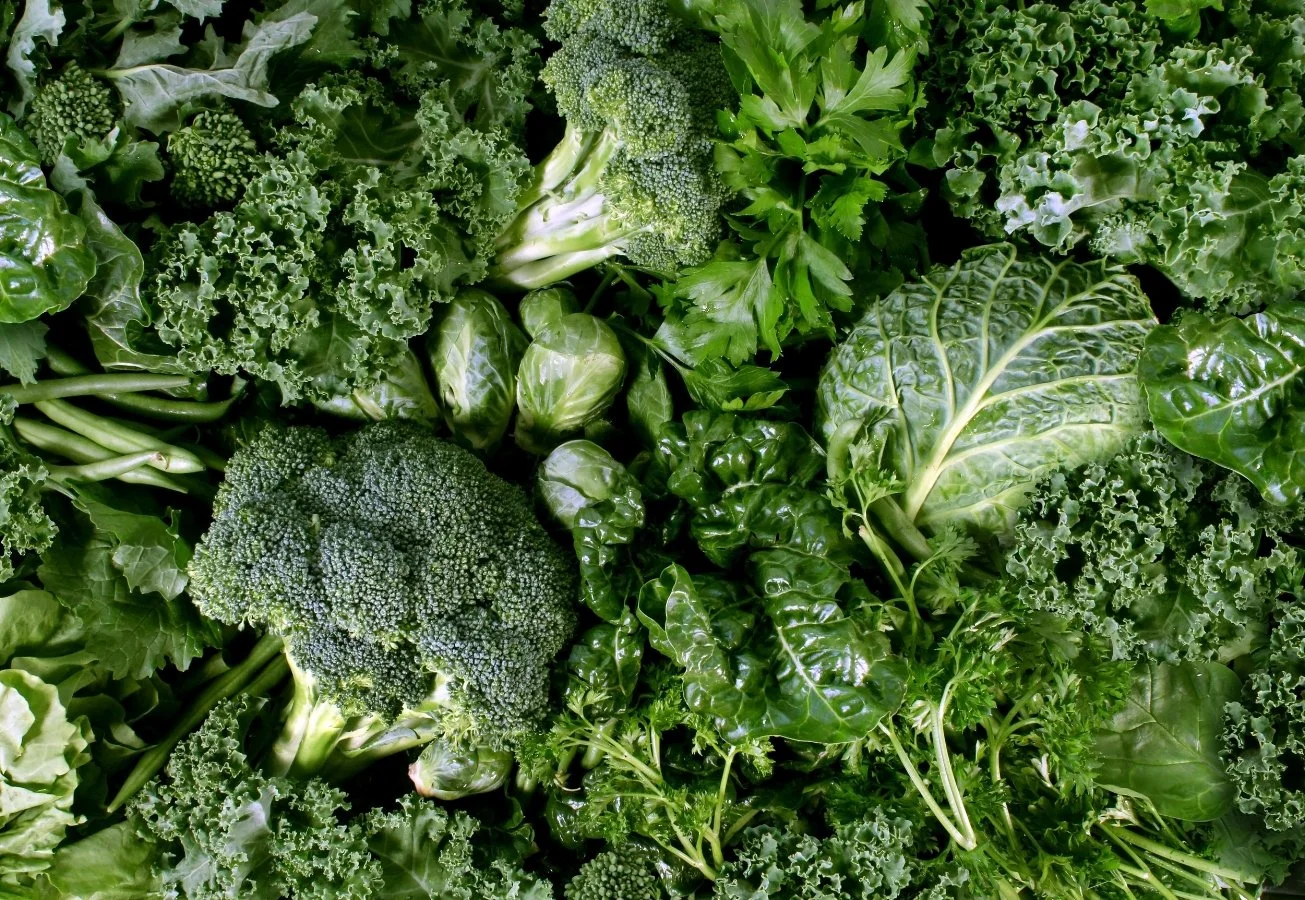What Makes Broccoli and Kale Superfoods?
By Kelly Morgan, Ph.D., M.B.A.
Chair, Fundraising and Marketing Committee
Broccoli and kale are often touted to be “superfoods.” And, yes, they really are amazingly healthy for you.
If you’re wondering what exactly is in these green powerhouses that makes them so “super,” I’ve done the research to give you some nerdy reasons to make these a staple in your diet.
To start, they're both considered cruciferous vegetables related to each other in the Brassica family. This family of super plants also includes cauliflower, cabbage, mustard greens, and Brussels sprouts.
These superfoods have a ton of nutrition and other health-promoting compounds, and they're relatively inexpensive and easy to cook too!
Super nutrition
Broccoli and kale are full of nutrition: vitamins, minerals, fiber, etc. They're both considered to be nutrient dense, which is a measure of nutrients per calorie - and these both have a lot!
100 grams of broccoli (about 1 cup, chopped) contains:
34 calories
2.8 g protein, 0.4 g fat, 6.6 g carbohydrates, and 2.6 g fiber.
Good source of B vitamins (when eaten raw)
>100% of your daily vitamin C
Almost 100% of your vitamin K
Good source of manganese
Traces of all the other vitamins and minerals
One cup of loosely-packed kale contains:
8 calories
0.7 g protein, 0.2 g fat (including omega-3), 1.4 g carbohydrates, and 0.6 g fiber.
Contains pre-vitamin A (beta-carotene).
Several B vitamins, including B1, B3, B5, B6, and folate (B9)
Rich in vitamins C and K
Lots of minerals including manganese, magnesium, iron, potassium, sulfur, copper, phosphorus, and calcium
As you can see, these two foods contain a lot of nutrients.
NOTE: Too much vitamin K may interact with certain blood-thinning medications. If you're taking one of these medications, talk to your doctor or pharmacist before incorporating too much of these superfoods into your diet.
Super health-promoting compounds
Broccoli and kale tend to taste a bit bitter - but that bitterness equals healthfulness!
This bitter flavor is from some of the health-promoting compounds in these super plant foods. Things like glucosinolates (e.g., sulforaphane and isothiocyanates) and polyphenol flavonols.
There are a few different types of kale - from curly kale, to dinosaur kale, to red/purple kale. The different colors result from slight differences in the amounts of the compounds these plants contain.
One of the main active ingredients in cruciferous vegetables are glucosinolates. These antioxidant compounds are very useful to help detoxify and protect against cancer.
FUN FACT: It's the precursors to glucosinolates that are in cruciferous vegetables, not the compounds themselves. When fresh broccoli and kale are eaten (or even chopped/blended) raw the active compounds are produced.
NOTE: Glucosinolates may affect iodine absorption and thyroid health, particularly in people prone to thyroid disease. In this case, you may not have to ditch these superfoods altogether - just cook them first.
These superfoods also contain flavonols like kaempferol and quercetin. Flavonols have antioxidant and anti-inflammatory properties, and they decrease your risk of cancer.
Kale also contains carotenoids like lutein and zeaxanthin. Carotenoids are known for promoting eye health and are protective against many cancers.
When cooked, kale contains another anti-cancer compound called indole.
Broccoli and kale are cruciferous superfoods. They are packed with nutrition and have a whole array of health-promoting compounds.
Almost everyone should be eating these regularly. Just be cautious if you're taking blood-thinning medications; and, if you have thyroid issues, cook them first.

